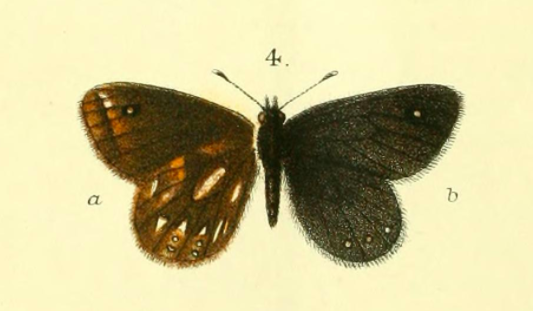|
Erebiola
''Erebiola butleri'', or Butler's ringlet, is an elusive New Zealand endemic (ecology), endemic butterfly, discovered in 1879 by John Enys (naturalist), John Enys at the alpine pass at the head of the Rakaia River. It is the only member of the genus ''Erebiola''. ''Erebiola'' is derived from Erebus, the ancient Greek world of darkness between Earth and Hades, while the Specific name (zoology), specific name, ''butleri'', was after Arthur Gardiner Butler of the British Museum who played a major role in early descriptions of New Zealand butterflies. Its Māori language, Māori name is ''pepe pouri'', which means dark moth, and shares the name with the black mountain ringlet and the forest ringlet butterfly. Description Butler's ringlet has a wingspan of 35–43 mm, with a 40 mm average for males and a 37 mm average for females. Both males and females are smoky brown, though males tend towards the richer browns while the females tend towards the paler browns. Th ... [...More Info...] [...Related Items...] OR: [Wikipedia] [Google] [Baidu] |
Erebiola Butleri Cropped Fereday
''Erebiola butleri'', or Butler's ringlet, is an elusive New Zealand endemic butterfly, discovered in 1879 by John Enys at the alpine pass at the head of the Rakaia River. It is the only member of the genus ''Erebiola''. ''Erebiola'' is derived from Erebus, the ancient Greek world of darkness between Earth and Hades, while the specific name, ''butleri'', was after Arthur Gardiner Butler of the British Museum who played a major role in early descriptions of New Zealand butterflies. Its Māori name is ''pepe pouri'', which means dark moth, and shares the name with the black mountain ringlet and the forest ringlet butterfly. Description Butler's ringlet has a wingspan of 35–43 mm, with a 40 mm average for males and a 37 mm average for females. Both males and females are smoky brown, though males tend towards the richer browns while the females tend towards the paler browns. The underside of the hindwing has wedge-shaped silvery-white marks. Both the under ... [...More Info...] [...Related Items...] OR: [Wikipedia] [Google] [Baidu] |
